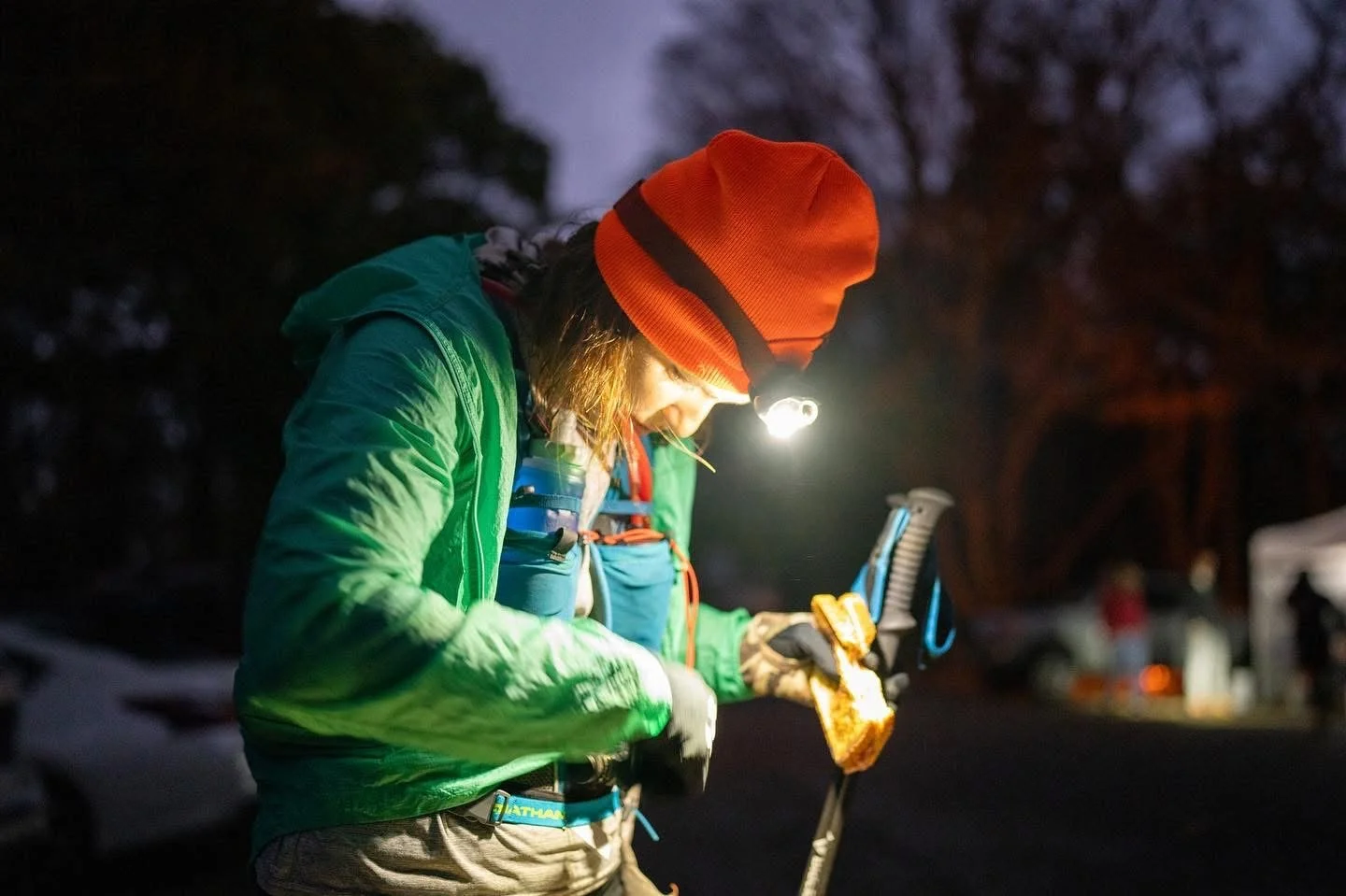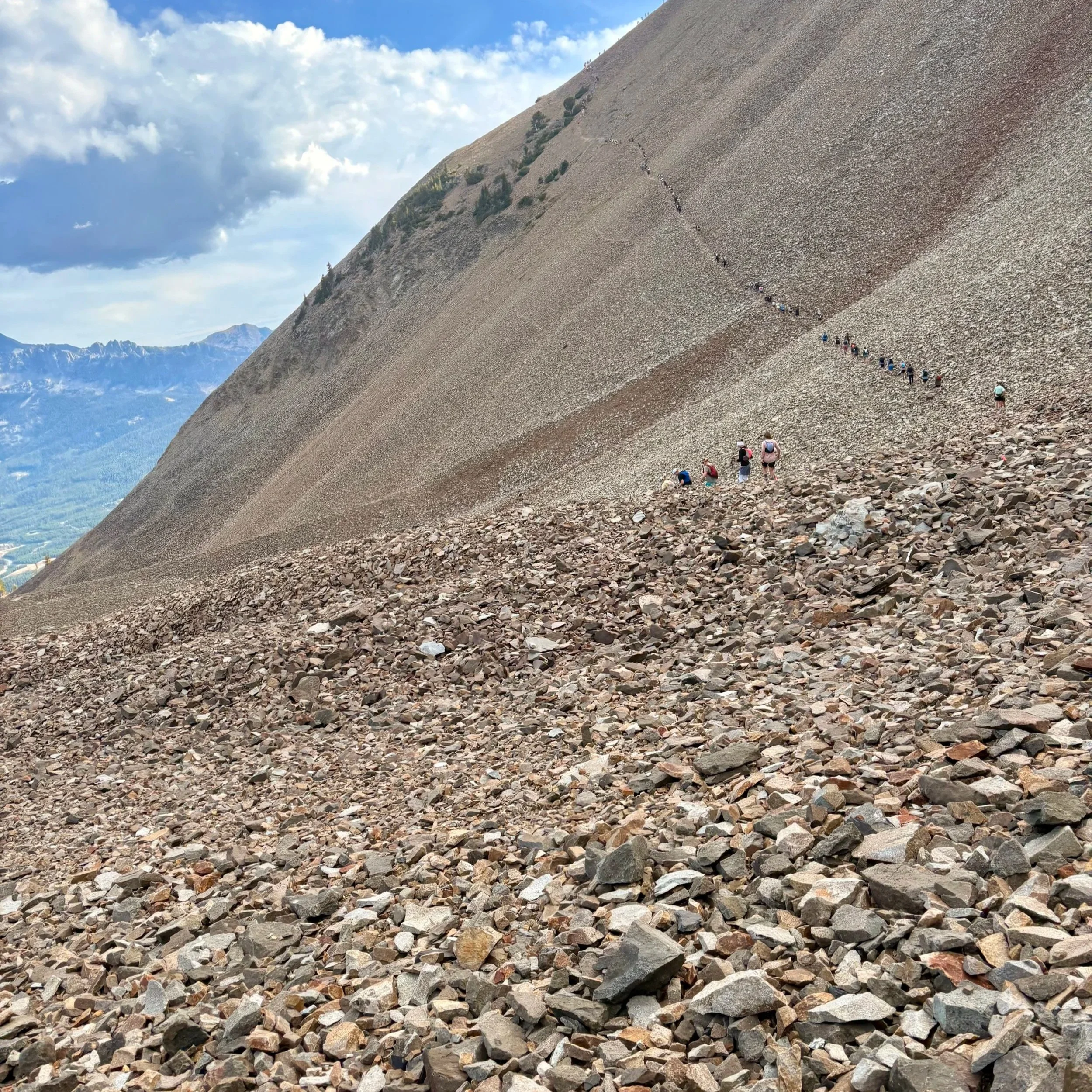Learning Culture is an Endurance Sport
When toeing the line of a 100 mile foot race two things are certain: it’s going to take longer than you think, and you’re going to have change along the way. Perhaps more important than the obvious skillset of fitness that’s trained for are the underlying mental skills you develop along the way. Things like learning to deal with discomfort, reframing your internal dialogue, problem solving, accepting help, and expecting the weird are all part of a successful 100 mile race.
And just like in a race, building a robust learning culture within a school district, business, or community is no different. It’s not a project, it’s not a sprint, or a one and done, it is an endurance event- a collective effort that demands pacing, reflection and iteration, adaptability, and community support. All of which, if done right, has lasting impact.
When folks in my office see me hobbling in the first few days after a race, hearing things like, “wow that’s crazy,” or “you’re amazing,” and my favorite, “I could never do that, are all commonplace. I don’t believe any of this is true quite frankly. It is curiosity and a deep desire to learn that spurs me on, what I do believe is that these qualities are teachable, and that most humans, if earned the right set of skills, are far more capable than they realize.
Cloud Splitter 100 (finish)- October 2023
Developing the capacity to handle hard things; life and professional challenges like workforce development, school identity, grading standards, or community engagement, starts with building a strong Learning Culture. And THAT commitment to personal and organizational culture is the real endurance sport.
Discomfort is Inevitable
In endurance sport, and just about any facet of life, discomfort is inevitable. In my own n=1 experiments, I tend to balk at any signs of discomfort, looking for all of the ways to avoid and mitigate it. What I have learned however is that I am more successful when I relax in the face of discomfort, rather than brace against it. At the end of AT100 my feet were in such bad shape that every step was (still is) excruciating. I knew I would finish, but the 6 miles that would usually take me an hour was going to take two. I just wanted to be done, for the pain of moving to be over, and that was giving me a massive amount of anxiety; making all of my aches and pains that much worse. I had to continually tell myself (out loud) to relax, “you’re ok.” Eventually the miles were done, but it was uncomfortable for a long time.
Building a learning culture is often uncomfortable because there are a lot of mistakes to be made. I don’t know anyone particularly excited about making mistakes. They expose the more vulnerable parts of our psyche, but within the framework of discomfort we can parse out a few key elements regarding successful learning culture:
A Commitment to “Learning to Learn:”
Learning culture must be embedded into an organization's DNA, wherein they prioritize “learning to learn.” Learning Cultures must accept errors, and embrace failure as opportunity.
Positive Assumptions about Human Nature:
The foundation of learning lies in the belief that humans can and will learn if they are provided the resources, and necessary psychological safety. This means that leaders provide the necessary resources for personnel to take appropriate risks with because they believe those people are the most qualified people to do so. This creates psychologically safe opportunities to fail and to try again with natural consequences, but without punishment. Natural consequences teach us about ourselves and abilities, punishment encourages linear advancement without learning.
Cloud Splitter 100, Mile 60(ish)- October 2023
Reframing the Internal or Organizational Narrative:
Taking on the whole enchilada is too much for our brains, learning cultures reframe the task in terms of just taking the next step or doing the next thing. 100 miles is a long distance, and to think of running it all at once is unfathomable, but when you break it down to just get to that next aid station 4 miles away, or just get up that hill and reassess, then it feels more manageable, “I can get up the hill, I don’t know if I can keep going after that, but that’s not my job right now, I’ll reassess that when I get there.” This reframing tactic encourage a few Learning Culture qualities within our brains:
Belief that the Environment can be Managed:
Learning Cultures operate off of the shared assumption of agency. That the organizational environment to some degree is manageable. Assumed organizational language that promotes a sense of onus rather than one of “this is happening to me,” promotes adaptation, and is a viable learning process.
Belief in the Value of Internal Cultural Analysis:
Internal analysis reveals important mechanisms by which groups and organizations function in completing their tasks. Without such analysis, there is little to no context for learning or change agenda.
The Rut 2025- Ascent to Lone Peak
Problem Solving
One of the more important lessons I’ve learned from ultra running is problem solving, and that more than anything problem solving involves curiosity.
One of the great challenges I have in the 100 mile distance is the night. Running overnight is one thing, running overnight on legs that have already done 50+ miles is another game… typically I have what is called a “pacer” with me. Someone I have significant time training with: they keep me talking, moving purposefully, and remind me to eat. It helps to avoid the zombie walk or even falling asleep. I didn’t have that at the AT100, but I did have a downloaded playlist full of The Mountain Project workout jams. I don’t know what time it was, still dark, but I trotted up a techy little jeep trail somewhere around mile 70 to 50 Cent’s Outta Control. I’ve never listened to music before, but it was clutch for this race.
Problem solving in a learning culture isn’t about solving The Great Problem, it’s about having a vision, a North Star and making decisions in that direction. Endurance sport is the same, my overall vision has evolved, it’s no longer about actually finishing a race, it’s zoomed out. What am I learning from this race, is there more to give? What resources (TMP playlist) do I have at my disposal that I have yet to tap into. Successful learning cultures problem solve in two key ways:
Commitment to Systemic Thinking:
As the world becomes more complex and interdependent, the ability to think systemically, to analyze fields and forces and understand their joint causal effects on each other will continue to become more critical to learning. Learning Cultures abandon simple linear causal logic in favor of complex mental models.
Positive Orientation toward the Future:
Think far enough ahead to assess the systemic consequences of different courses of action, but also think in terms of the near future to assess whether or not our solutions are working.
In short, Learning Cultures know the value of connectivity, and understand that each seemingly small task or decision has a trajectory either for or against the overall vision of the organization.
The Rut 2025
Community is Key
Accept help from people who are eager, willing, and have some wisdom. While I technically did this race solo- without crew or pacers- I was far from alone. This specific race was extremely well aided, and each aid station was full service, and full of volunteers who had been in my shoes. They knew what I needed, they knew the most efficient way to get in and out of the aid station, and they helped me double check my gear.
I also teamed up with other runners, listening to their stories of why they toed the line, trading race and aid station hacks, as well as sharing life stories made miles fly by. Camaraderie is huge in endurance sports and leaning on community often is the key factor in helping you reach the finish.
Learning Culture building is no different, while there is often a consultant or project manager, those leaders know that community is at the heart of success:
Commitment to Cultural Diversity:
Diversity in the context of Learning Culture should be assumed desirable, and that it will inevitably create subcultures that are necessary for learning and innovation. However, in order for diversity to be a resource individuals in a multicultural task group must be connected and value each other enough to learn from one another. It does NOT however, mean letting subcultures run on their own without coordination with the entire system. Laissez-faire leadership does not work.
Commitment to Truth through Inquiry and Dialogue:
Solutions are great, we need solutions, but where do they come from? They come from a deep commitment to inquiry, the pragmatic, unbiased search for truth. Learning Cultures, because they have established norms like positive assumptions about human nature, are able to set aside ego in favor of problem solving. This object search for truth gives organizations the flexibility needed to adapt learning methods as ever changing problems arise. The only way for this to happen is for leaders to realize that there is much they do not know. The learning then becomes a shared responsibility requiring all levels of an organization to build more open, trusting relationships.
The Rut 2025- Finish Line
Expect the weird.
Bodies do weird things after 100 miles on pretty much nothing but water, salt, and a shitload of maltodextrin (gels). Blistering, night sweats, rashes, and hallucinations (we can talk about the moose under the bridge in Arkansas another time) are all part of the game. Weird things happen, just role with it.
Established Learning Cultures are exceptional at not only accepting, but utilizing the weird to their advantage:
Commitment to Full and Open Task-Relevant Communication:
In organizational culture openness does not refer to “letting it all hang out,” however, anyone must be able to communicate with anyone else, and everyone must assume that telling the truth as best they can is positive and desirable. Being as open as possible about task-relevant information is the foundation of building trust as far as the rules of social order will allow.
Arkansas Traveler 100 Finish Line (28 Hours)- October 2025
We often talk about having a “growth” or “learning” mindset without actually mapping it out. Without even really realizing it, endurance sport has done much of that mapping for us. And while there is no magic formula to finish a 100 mile foot race or build the learning culture within an organization we can identify qualities and skills of such successful endeavors. Daunting as it may seem, the good news is that these qualities are teachable, and that most humans, if earned the right set of skills, are far more capable than they realize.





